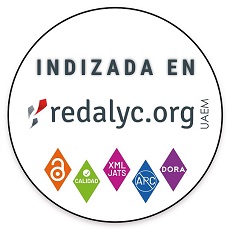Financial Performance Index (FPIMS): a proposal to measure the performance and project execution capacity in manufacturing companies in Santander (COL)
Índice de desempeño financiero (FPIMS): una propuesta para medir el desempeño y la capacidad de ejecución de proyectos en empresas manufactureras en Santander (COL)
DOI:
https://doi.org/10.15446/dyna.v92n236.117292Palabras clave:
manufacturing sector, financial performance, competitiveness, project management (en)sector manufacturero, resultados financieros, competitividad, gerencia de proyectos (es)
Descargas
The manufacturing sector can be considered the main driver of economic growth in countries, as demonstrated by the macroeconomic variable GDP. However, during the pandemic, the historical rise in exchange rates and the increase in inflation and interest rates resulted in countries’ negative performance. Currently, Colombia ranks last in the world in terms of productivity among OECD member countries. This problem is reflected in the Santander region, where production and sales variables have experienced negative changes, in addition to a stagnation in employment in the manufacturing sector. The objective of this work is to design a financial composite index to measure competitiveness, in addition to analyzing its implications for measuring performance and the capacity to execute projects in manufacturing companies. For the development of the research, an index called FPIMS was estimated for 2392 companies. Correlational analysis was then carried out and the companies were categorized. Finally, machine learning models were used to predict the FPIMS value. The results show that the proposed index can be a useful tool to determine project execution capacity in manufacturing companies in Santander.
El sector manufacturero puede considerarse el principal motor del crecimiento económico de los países, como demuestra la variable macroeconómica. Sin embargo, en la época de la pandemia, el alza histórica de las tasas de cambio, el aumento de la inflación y de las tasas de interés se tradujeron en un desempeño negativo de los países. Actualmente, Colombia ocupa el último lugar mundial en productividad en relación con los países miembros de la OCDE. Esta problemática se ve reflejada en la región de Santander donde las variables de producción y ventas tuvieron cambios negativos, además de un estancamiento en el empleo del sector manufacturero. El objetivo de este trabajo es diseñar un índice compuesto financiero para medir la competitividad, además analizar sus implicaciones de para para medir el desempeño y la capacidad de ejecución de proyectos en empresas manufactureras. Para el desarrollo de la investigación se estimó el índice denominado FPIMS para 2.392 compañías, posteriormente realizó un análisis correlacional y se categorizaron las empresas, finalmente se emplearon modelos de aprendizaje automático para predecir el valor del FPIMS. Los resultados mostraron que el índice propuesto puede ser una herramienta útil para determinar la capacidad de ejecución de proyectos en las empresas del sector manufacturero en Santander.
Referencias
[1] Gryshova, I., Kyzym, M., Khaustova, V., Korneev, V. and Kramarev, H., Assessment of the industrial structure and its influence on sustainable economic development and quality of life of the population of different world countries, Sustainability, 12(5), art. 2072, 2020. DOI: https://doi.org/10.3390/su12052072.
[2] Bui, P., and Nguyen, P., Unveiling the dynamics: corporate governance’s impact on firm performance in Vietnam’s thriving market landscape, Journal of the Knowledge Economy, 2024, DOI: https://doi.org/10.1007/s13132-024-02271-7
[3] Rahim, D.A., Supartoyo, Y. Setiawan, H.S., and Kasikoen, K.M., Investment and industrial sector in regional economic performance: Development strategies to Papua-Indonesia, Journal of Infrastructure, Policy and Development, 8(7), art. 4094, 2024.
[4] Manyanga, W., Kanyepe, J., Chikazhe, L. and Manyanga, T., The effect of debt financing on the financial performance of SMEs in Zimbabwe, Cogent Soc Sci, 9(2), Dec. 2023, DOI: https://doi.org/10.1080/23311886.2023.2282724.
[5] Pantea, M., Gligor, D., and Anis, C., Economic determinants of romanian firms’ financial performance, Procedia Soc Behav Sci, 124, pp. 272–281, 2014. DOI: https://doi.org/10.1016/j.sbspro.2014.02.486.
[6] Liu, G., Zhao, L., Wang, X., and Liao, M., Impact of social welfare finance on institutional financial performance: cross-country evidence, Res Int Bus Finance, 70, art. 102385, 2024, DOI: https://doi.org/10.1016/j.ribaf.2024.102385.
[7] Duguleană, C., Duguleană, L., and Deszke, K.-D., Financial performance and capital structure – an econometric approach for Romanian e-commerce companies during the COVID-19 pandemic, Econ Anal Policy, 83, pp. 786–812, 2024, DOI: https://doi.org/10.1016/j.eap.2024.05.024.
[8] Gerschewski, S., and Xiao, S.S., Beyond financial indicators: An assessment of the measurement of performance for international new ventures, International Business Review, 24(4), pp. 615–629, 2015. DOI: https://doi.org/10.1016/j.ibusrev.2014.11.003.
[9] Mousa, K.M.K., Ali, A.A., and Gurler, S., Strategic planning and organizational performance: an empirical study on the manufacturing sector, Sustainability, 16(15), art. 6690, 2024, DOI: https://doi.org/10.3390/su16156690.
[10] Thacker, J., and Saha, D., Financial performance and corporate distress: searching for common factors for firms in the indian registered manufacturing sector, Comput Econ, 2024, DOI: https://doi.org/10.1007/s10614-024-10620-6.
[11] Abu-Hamour, A.M., Saleh, M.M.A., Abdo, K.K., Alzu’bi, A.K.A., Alnsour, E.A., and Jwaifel, A.M.Y., The effect of financial reporting quality on earnings quality of industrial companies, Corporate and Business Strategy Review, 5(2), pp. 38–50, 2024, DOI: https://doi.org/10.22495/cbsrv5i2art4.
[12] Chen, X., and Xu, J., Analysis of financial management practices in China’s manufacturing sector before and during COVID-19: a comparison with Romania, Kybernetes, 2023.
[13] Fares, N., and Lloret, J., Barriers to supply chain performance measurement during disruptions such as the COVID-19 pandemic, International Journal of Quality & Reliability Management, 40(5), pp. 1316–1342, 2023.
[14] Rinaldi, M. and Bottani, E., How did COVID-19 affect logistics and supply chain processes? Immediate, short and medium-term evidence from some industrial fields of Italy, Int J Prod Econ, 262, art. 108915, 2023. DOI: https://doi.org/10.1016/j.ijpe.2023.108915.
[15] D’Ecclesia, R.L., Levantesi, S., and Stefanelli, K., Measuring business impacts on the sustainability of European-listed firms, Socioecon Plann Sci, 96, art. 102078, 2024. DOI: https://doi.org/10.1016/j.seps.2024.102078.
[16] Al-zoubi, A.M., COVID-19 pandemic and financial performance, International Journal of Professional Business Review, 8(4), art. e0825, 2023. DOI: https://doi.org/10.26668/businessreview/2023.v8i4.825.
[17] Tabash, M.I., Farooq, U., Ashfaq, K., and Tiwari, A.K., Economic policy uncertainty and financing structure: a new panel data evidence from selected Asian economies, Res Int Bus Finance, 60, art. 101574, Apr. 2022, DOI: https://doi.org/10.1016/j.ribaf.2021.101574.
[18] Consejo Privado de Competitivad, Informe nacional de competitivdad 2023-2024. [Online]. [Accessed: Oct. 24th of 2024]. Available at: https://compite.com.co/informe/informe-nacional-de-competitividad-2023-2024/mercado-laboral/
[19] DANE, Encuesta Mensual Manufacturera con Enfoque Territorial. [Online]. [Accessed: Oct. 23th 2024]. Available at: https://www.dane.gov.co/index.php/estadisticas-por-tema/industria/encuesta-mensual-manufacturera-con-enfoque-territorial-emmet/emmet-historicos
[20] Nunes, L.B., Schumpeter’s entrepreneurs in the 20th century: the Tucker automobile, Technol Forecast Soc Change, 102, pp. 14–20, 2016. DOI: https://doi.org/10.1016/j.techfore.2015.02.021.
[21] Winter, S.G., The logic of appropriability: from Schumpeter to Arrow to teece, Res Policy, 35(8), pp. 1100–1106, 2006. DOI: https://doi.org/10.1016/j.respol.2006.09.010.
[22] Ansoff, H.I. and McDonnell, E.J., Corporate strategy, (No Title), 1987.
[23] Globocnik, D., Faullant, R., and Parastuty, Z., Bridging strategic planning and business model management – A formal control framework to manage business model portfolios and dynamics, European Management Journal, 38(2), pp. 231–243, 2020. DOI: https://doi.org/10.1016/j.emj.2019.08.005.
[24] Fang, K., Zhou, Y., Wang, S., Ye, R., and Guo, S., Assessing national renewable energy competitiveness of the G20: a revised Porter’s Diamond Model, Renewable and Sustainable Energy Reviews, 93, pp. 719–731, 2018. DOI: https://doi.org/10.1016/j.rser.2018.05.011.
[25] Lee, H., Kim, M.-S., and Park, Y., An analytic network process approach to operationalization of five forces model, Appl Math Model, 36(4), pp. 1783–1795, 2012. DOI: https://doi.org/10.1016/j.apm.2011.09.012.
[26] Cooper, S.C., Pereira, V., Vrontis, D., and Liu, Y., Extending the resource and knowledge based view: insights from new contexts of analysis, J. Bus Res, 156, art. 113523, 2023. DOI: https://doi.org/10.1016/j.jbusres.2022.113523.
[27] Monson, F.K.S., Unveiling the strategic resource dimension: a bibliometric and systematic review of the Resource-Based View and its application to corporate governance, The Journal of High Technology Management Research, 35(2), art. 100516, 2024. DOI: https://doi.org/10.1016/j.hitech.2024.100516.
[28] Jyoti, C., and Efpraxia, Z., Understanding and exploring the value co-creation of cloud computing innovation using resource-based value theory: an interpretive case study, J Bus Res, 164, art. 113970, 2023. DOI: https://doi.org/10.1016/j.jbusres.2023.113970.
[29] Ozdemir, S., Fernandez-de Arroyabe, C.J., Sena, V., and Gupta, S., Stakeholder diversity and collaborative innovation: integrating the resource-based view with stakeholder theory, J Bus Res, 164, art. 113955, 2023. DOI: https://doi.org/10.1016/j.jbusres.2023.113955.
[30] Reinoso, H., and Türegün, M., Examining the factor structure of MUIS-C scale among baby boomers with hepatitis C, Applied Nursing Research, 32, pp. 111–116, 2016. DOI: https://doi.org/10.1016/j.apnr.2016.06.007.
[31] Youssef, N., and Alharbi, H., Validity and reliability of the English version of the student evidence-based practice questionnaire among Arabic-speaking undergraduate students at health sciences colleges: a cross-sectional study, Nurse Educ Today, 118, art. 105525, 2022. DOI: https://doi.org/10.1016/j.nedt.2022.105525.
[32] Hair, J.F., Black, W.C., Babin, B.J., and Anderson, R.E., Multivariate data analysis: global edition, Pearson Higher Education Upper Saddle River. NJ, USA, 2010.
[33] Elharbili, R., El Moussaoui, T., El Ass, K., Belloulid, M.O., El Alaoui El Fels, A., and Samiri, M.Y., Hybrid data driven approach based on ANNs-PCA for wastewater treatment plant performance assessment, Cleaner Water, 2, art. 100058, 2024. DOI: https://doi.org/10.1016/j.clwat.2024.100058.
[34] Niu, Y., Wang, W., Geng, J., Zhao, W., Zhang, Z., and Li, X., Study on rheological properties and index of Ethylene-Propylene-Diene Monomer (EPDM) sulfur modified asphalt based on principal component analysis (PCA), Constr Build Mater, 449, art. 138546, 2024. DOI: https://doi.org/10.1016/j.conbuildmat.2024.138546.
[35] Çelik, Ö., and Sürücü, A., Soil quality assessment in the Araban plain across various land use types, J King Saud Univ Sci, 36(9), art. 103385, 2024, DOI: https://doi.org/10.1016/j.jksus.2024.103385.
[36] Dotters-Katz, S.K., Grace, M.R., Pilliod, R., Hofler, L.G., Temming, L. and Shanks, A., Cracking the code: interpreting content and phrases used in maternal-fetal medicine fellowship letters of recommendation, Am J Obstet Gynecol MFM, 6(8), art. 101404, 2024. DOI: https://doi.org/10.1016/j.ajogmf.2024.101404.
[37] Cui, F., Kim, M., Park, C., Kim, D., Mo, K., and Kim, M., Application of Principal Component Analysis (PCA) to the assessment of parameter correlations in the partial-nitrification process using aerobic granular sludge, J Environ Manage, 288, art. 112408, 2021. DOI: https://doi.org/10.1016/j.jenvman.2021.112408.
[38] Kaur, M. and Malhan, S., The role of the manufacturing sector in driving India’s Long-Term Growth, in the framework for resilient industry: a holistic approach for developing economies, Emerald Publishing Limited, pp. 301–312, 2024. DOI: https://doi.org/10.1108/978-1-83753-734-120241021.
[39] Oumbé, H.T, Djeunankan, R., and Mougnol, A.K.A., Analysing the effect of foreign aid on industrialization: Evidence from Africa, International Economics, 178, art. 100498, Aug. 2024, DOI: https://doi.org/10.1016/j.inteco.2024.100498
[40] Gallizo, J.L., Jiménez, F., and Salvador, M., Adjusting financial ratios: a Bayesian analysis of the Spanish manufacturing sector, Omega (Westport), 30(3), pp. 185–195, 2002, DOI: https://doi.org/10.1016/S0305-0483(02)00026-9.
[41] Bărbuță-Mișu, N., Madaleno, M., and Ilie, V., Analysis of risk factors affecting firms’ financial performance—Support for managerial decision-making, Sustainability, 11(18), art. 4838, 2019. DOI: https://doi.org/10.3390/su11184838.
[42] Matuozzo, A., Yoo, P.D., and Provetti, A., A right kind of wrong: European equity market forecasting with custom feature engineering and loss functions, Expert Syst Appl, 223, art. 119854, 2023. DOI: https://doi.org/10.1016/j.eswa.2023.119854.
[43] Xuan, S., Song, D., and You, G., Financial risk prevention and corporate green innovation: A quasi-natural experiment based on the new asset management regulation, Pacific-Basin Finance Journal, art. 102566, 2024. DOI: https://doi.org/10.1016/j.pacfin.2024.102566.
[44] Huang, P.-Y., and Huang, Y.-S., Financing and operational strategies for supply chains with yield uncertainty and capital constraints, Comput Ind Eng, 195, art. 110417, 2024. DOI: https://doi.org/10.1016/j.cie.2024.110417.
[45] Cheng, C., Qiu, K., and Yang, Y., The imprint effect of initial institutional environments and bank financing in family businesses, Emerging Markets Review, 63, art. 101213, 2024, DOI: https://doi.org/10.1016/j.ememar.2024.101213.
[46] Cui, D., Cheng, L., and You, J., Financing constraints and patent investment in small and medium-sized enterprises: a family entrepreneurial perspective, Financ Res Lett, 63, art. 105318, 2024. DOI: https://doi.org/10.1016/j.frl.2024.105318.
[47] Gładysz, B., and Kuchta, D., Sustainable metrics in project financial risk management, Sustainability, 14(21), art. 14247, 2022. DOI: https://doi.org/10.3390/su142114247.
[48] Vrchota, J., Řehoř, P., Maříková, M., and Pech, M., Critical success factors of the project management in relation to Industry 4.0 for sustainability of projects, Sustainability, 13(1), art. 281, 2020. DOI: https://doi.org/10.3390/su13010281.
[49] Coelho, M.B., Lacerda, D.P., Piran, F.A.S., da Silva, D.O. and Sellitto, M.A., Project management efficiency measurement with data envelopment analysis: a case in a petrochemical company, Applied System Innovation, 7(1), art. 2, 2023. DOI: https://doi.org/10.3390/asi7010002.
[50] Oláh, J., Hidayat, Y.A., Dacko-Pikiewicz, Z., Hasan, M., and Popp, J., Inter-Organizational trust on financial performance: proposing innovation as a mediating variable to sustain in a disruptive era, Sustainability, 13(17), art. 9947, 2021. DOI: https://doi.org/10.3390/su13179947.
Cómo citar
IEEE
ACM
ACS
APA
ABNT
Chicago
Harvard
MLA
Turabian
Vancouver
Descargar cita
Licencia
Derechos de autor 2025 DYNA

Esta obra está bajo una licencia internacional Creative Commons Atribución-NoComercial-SinDerivadas 4.0.
El autor o autores de un artículo aceptado para publicación en cualquiera de las revistas editadas por la facultad de Minas cederán la totalidad de los derechos patrimoniales a la Universidad Nacional de Colombia de manera gratuita, dentro de los cuáles se incluyen: el derecho a editar, publicar, reproducir y distribuir tanto en medios impresos como digitales, además de incluir en artículo en índices internacionales y/o bases de datos, de igual manera, se faculta a la editorial para utilizar las imágenes, tablas y/o cualquier material gráfico presentado en el artículo para el diseño de carátulas o posters de la misma revista.


















